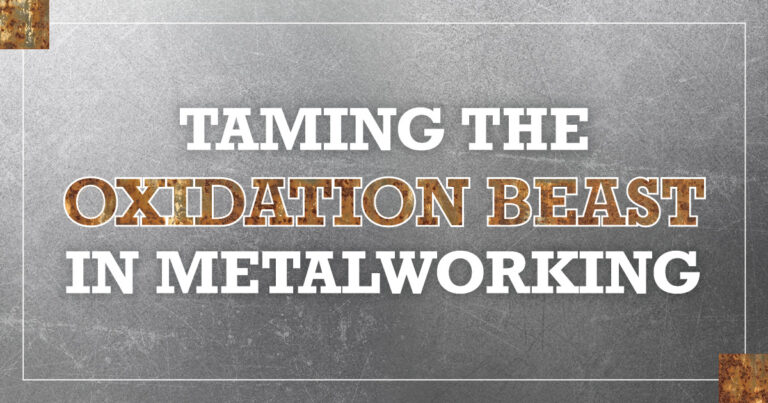Picture this: You’re awaiting the arrival of your heat-treated metal assemblies to move them onto your production floor, but when the moment arrives, there’s a massive problem. Instead of the gleaming surfaces you envisioned, the unmistakable signs of oxidation mar your metal assemblies. Now, instead of progressing forward, you’re faced with having to send your assemblies back for rework.
The Battle Against Oxidation in Heat Treating and Brazing
Anytime metals undergo heat treatment to achieve their desired properties, oxidation lurks as a silent saboteur. As your materials undergo controlled heating and cooling cycles, the risk of oxidation looms when safeguards aren’t taken every step of the way.
Now let’s shift the focus to brazing. Imagine molten filler delicately bridging the gap between two metal surfaces to create sturdy joints. Here’s where oxidation can emerge as an adversary to impede the fusion of the joint and jeopardize its integrity.
Why Oxidation Must Be Avoided
Controlling oxidation is essential when it comes to heat treating and brazing metal components. By employing protective atmospheres and best practices as a metal substrate undergoes treatment, your components can be protected. Oxidation-free metal components are essential to manufacturers to achieve these objectives.
- Maintain Material Fortitude: Oxidation forms a brittle layer of oxides that erode the integrity of the metal, weakening it and undermining its structural resilience. It can also disrupt the flow of electrical current where wiring is concerned, jeopardizing the circuitry in vital components and systems.
- Preserve the Outer Surface: Surface aesthetics can become impaired. What should have been a pristine, flawless finish becomes tarnished by oxidation. Surface roughness and discoloration replace a smooth, polished veneer, diminishing the visual appeal and marketability of the finished product.
- Ensure Performance and Durability: The repercussions of oxidation extend beyond appearance. The bond between the metal and the coating can fail when oxidation exists. Coatings struggle to adhere to oxidized surfaces, compromising performance and durability.
- Reduce Waste, Time Loss, and Costs: Oxidation results in wasted material, time, and costs. Scaling and flaking of metal surfaces lead to material waste, driving up production costs and reducing overall efficiency. Downstream processes like welding, brazing, and machining become less efficient and more costly with additional cleaning, surface preparation, and extended processing time.
- Avoid Production of Toxic Compounds: Oxidation can also cause toxic compounds to emerge, which demands vigilance to safeguard the well-being of those on the front line of manufacturing.
Prevailing in the Fight Against Oxidation
By deploying tactics such as protective atmospheres, appropriate fluxes, and controlled exposure times, an experienced materials treatment partner can tilt the odds in your favor. When you work with a team of skilled technicians who can uphold the integrity of your metal components, you can ensure the quality of your finished goods, streamline processes, reduce costs, enhance personnel safety, and achieve a pristine finish.
